|
A sizable number of public transport vehicles will be self-driving by 2030 throughout the world. This will be followed by self-driving private and commercial vehicles. There is a good degree of complexity and cooperation required in order to transition smoothly to that new reality. Cities, governments and service providers need to proactively plan ahead in order to maximize the benefit and opportunities offered by this wave of change. Caught off-guard, authorities and societies will find themselves struggling - as seen with the rise of Auto Cloud Service Provider (e.g. Uber, Lyft, Didi Quandi, etc) and the rise of enthusiasts operated drone technologies. This article attempts to provide city planner, technologists and operators with a cooperative framework and position the seemingly disconnected navigation services offered by transport-related technologies. ELEMENTS OF TRAFFIC SYSTEMBefore jumping into the architecture framework itself, lets take a quick look at the Elements involved in a typical traffic system. These are as follows:
INFORMED NAVIGATIONOne of the biggest challenge in achieving closed-loop transport management system (CLTMS)* is the lack of feedback and control mechanism on incoming traffic payloads. Even though the technology is already in existence, the cost and complexity involved limits it to larger commercial enterprises. The arrival of smart phones (embedded with navigational chips) made it possible for the masses to reap the benefit offered by navigation and positioning technologies. With enablement comes adoption - as innovative and often free-of-charge consumer-level travel and navigation appeared, consumers rushed to embrace it as an essential part of daily life - thus, ushering in an era of informed navigation. Much to the joy of traffic authorities, mass adoption of traffic management kits without spending a single tax-paying dollar! With almost all of the traffic payload participating in some form of navigation systems, the scene is now set for the initial phase of CLTMS. NOTE: *For more info on CLTMS, head down to the end of this article. TRAFFIC ORCHESTRATORSTechnologies such as Waze, Google Map, Moovit, provides the orchestration layer that allows travelers and commuters to collaborate, communicate and navigate. Overall:
To be precise, the various operators in the Orchestration layers can be seen in the illustration below. The overlaying of orchestration services atop physical assets such as a building, traffic lights, cars, etc. makes it possible to aggregate the functional value adds of each service beyond any individual assets can provide in isolation. The idea, more commonly known as virtualization in the iT world, can now be meaningfully to traffic management system. THE INVISIBLE HAND OF THE SMART TRAFFICThe Orchestration Triage of Payload, Infra and Endpoint marks the early stage evolution of Smart Traffic management. The current Orchestration Triage is not yet a functional idea in the absence of a common framework and standard. Some form of centrality is required - but not an authoritative one. Instead a federated and virtual hub in which each existing and emerging orchestration layer strive to provide and maximize service benefits to its underlying asset layer. Such arrangement also makes it possible for each orchestration layer to continue to evolve in a manner that has no direct dependency on the other orchestration layer. ORCHESTRATION HUBSThe virtual hubs become key servicing layers to the Smart City planners. It allows future smart city systems to augment traffic services from various source (i.e. roads, road assists, driverless cabs, endpoint dropoffs, retail malls, drive-thru outlets, etc.) For instance, through the virtual hub, a driver navigates using a mobile app. This app is compatible with the payload orchestration standard. As the driver keys in the intended destination his/her request is serviced by the Infra Orchestrator layer. Due to unavailability of parking space, the Infra Orchestrator sources for an alternate parking spot which is further away from the destination and a feeder coach booking request package to the driver. The driver selects the option and a coach is booked. The Smart City hub orchestration layer coordinates this service and dispatches a driver-less coach to the pickup location. The entire process is automated with bio-recognition capability in order to minimize the need for physical identification by the driver or passengers. The virtual hub can be broken into 2 types:
ULTIMATELY.......As cities grow, the city’s infrastructure plays catch-up with growing demand. Millions were invested in improving the infrastructure alone. These structural asset improvements led to the creation of different methods of tackling the transportation challenge such as using rail system (e.g. train), dedicated bus lanes, motorcycle lanes, highways and on/off-peak hour zones, etc. More recently there is a growing popularity of multi-modal transport. But this view of ‘transportation-infrastructure-as-a-problem’ will yield limited solution results. As we have seen, traffic growth will continue to outstrip the capacity of any existing infrastructure. Something more adaptable, intelligent and all encompassing is needed. An open-loop approach to traffic management is skewed towards the supply side of traffic serving infrastructure. CLTMS takes a holistic view of traffic generation, traffic payload, infrastructure positioning, etc. The next few years will see government bodies actively engaging traffic at the payload level (demand-side traffic). A better approach is to consider the triage of traffic infrastructure, payload (input) and payload exit points (output) using Smart Traffic hub as the centerpiece. New types of services can be defined within existing traffic infrastructures. For instance, governments can use the Smart Traffic Hub it to plan for zoning, traffic reduction initiative, plugin new transport modes, etc. Individual driver can use the Payload Service Hub to better plan travels, get parking discount and optimize using combined public transport modes during peak season. Commercial companies can direct their delivery trucks away from no-drive zones and priority delivery lanes as designated by the authority. Commercial businesses can better plan their workers route and gain a holistic traffic view which includes planned road closure and commercial activities within an area. For governing bodies, the distributed mode of traffic management offers the benefit of adaptability, cost efficiency and effectiveness unavailable to a top down model. Government should take advantage of the emerging triage to handle traffic situation. The self-optimized traffics should also take into consideration the privacy and safety of local residents in order to avoid unplanned traffic flows into residential areas resulting in increased pedestrian risks.More could be done at the endpoint layers. Such as imposing new building rules that require integration with public infra traffic information system and provide minimum level of parking management capability in commercial building of certain size in certain location. CLOSED-LOOP TRAFFIC MGMT SYSTEM (CLTMS)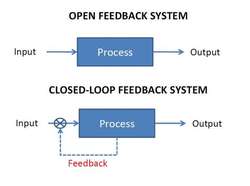 Source: http://www.dfe.com/ Source: http://www.dfe.com/ Prior to the mass adoption of mobile technology, traffic authorities can only control traffic elements directly under their management - i.e. road infrastructure and its traffic control assets. The inability to control traffic payload and visibility over endpoint capacity itself makes this an open feedback system. Technology have since converged and it is now possible to consider closed-loop traffic management (CLTM) approach. Armed with mobile phones, most drivers are nowadays equipped with some form of cloud navigational capabilities. New traffic orchestration layer have since emerged to take advantage of consumers appetite for cloud navigation services. The Digital and mobile tech have also pushed building management owners to increase the visibility of services in their respective buildings. This approach is considered as a way to attract business traffics and as a way to guarantee accessibility to their commercial buildings. CLTMS have to be able to at least anticipate incoming traffics and adjust itself for best intended user output result. This will have to be done at the individual road user level. To achieve this, it is essential for the system to consider
1 Comment
In the following smart city discussion, we will present a new framework that will form the third leg of the StAF framework - the city itself. Within this blog, you might have come across the word StAF - it has so far in the blog been used to map the interrelation between:
SMART CITY Most Smart City initiative in discussion today emphasizes one of the following:
City Development Model While there are many city development models, the concern or rather the motivation of city planners is more or less along these lines:
The Tale of Two Smart Initiatives Smart city is a large topic. Our intention is to provide some logical framework for which one can start to map and position smart city initiatives. We use various other complementary framework and model that already presented in earlier blogs to help us. For a start, this blog will break out to 2 further subtopics:
City Space Stack In the earlier retail blog, we briefly introduced PSS stack - which shows how a product forms part of a system and in turn the system lends its service to a particular space. While the stack remains the same, the relevance of the system is expanded to a larger space - the city space. Our earlier blog regarding PSS stack have quietly assumed the passive role of occupants in a given space. It is extremely important for us to understand the role and the impact of systems on space occupants in a space as large and as complex a city. In a private space, S2P services are directed at individuals or people with relationship with the individual concerned. In a city space, individuals form part of a community and these communities in turn defines the city. The following diagram shows the relevance of each stack layer to the city components. Communities
An individual is the most basic building block within the socio-ecological model. The rest of the tier in the model is simpler a collective grouping of individuals. In a nutshell:
|
BackgroundUsing a combination of StAF and R3MAGICS, this blog post provides architecture analysis of the trend and major players in the smart things market. R.3.M.A.G.I.C.S is short for Robotics, 3D Printing, Mobility, Analytics, Gamification, IoT, Cloud and Social platform. It encapsulates the key elements that will change the social-economic fabric in the coming years. StAF is short for Strategy-driven Architecture Framework. ArchivesCategories |

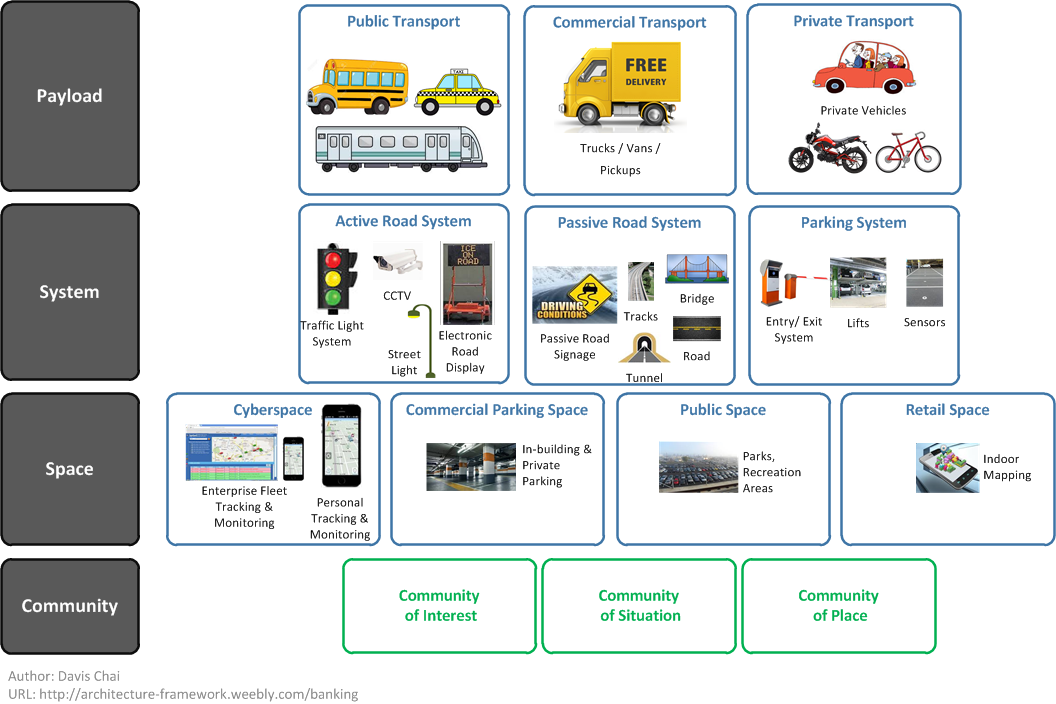
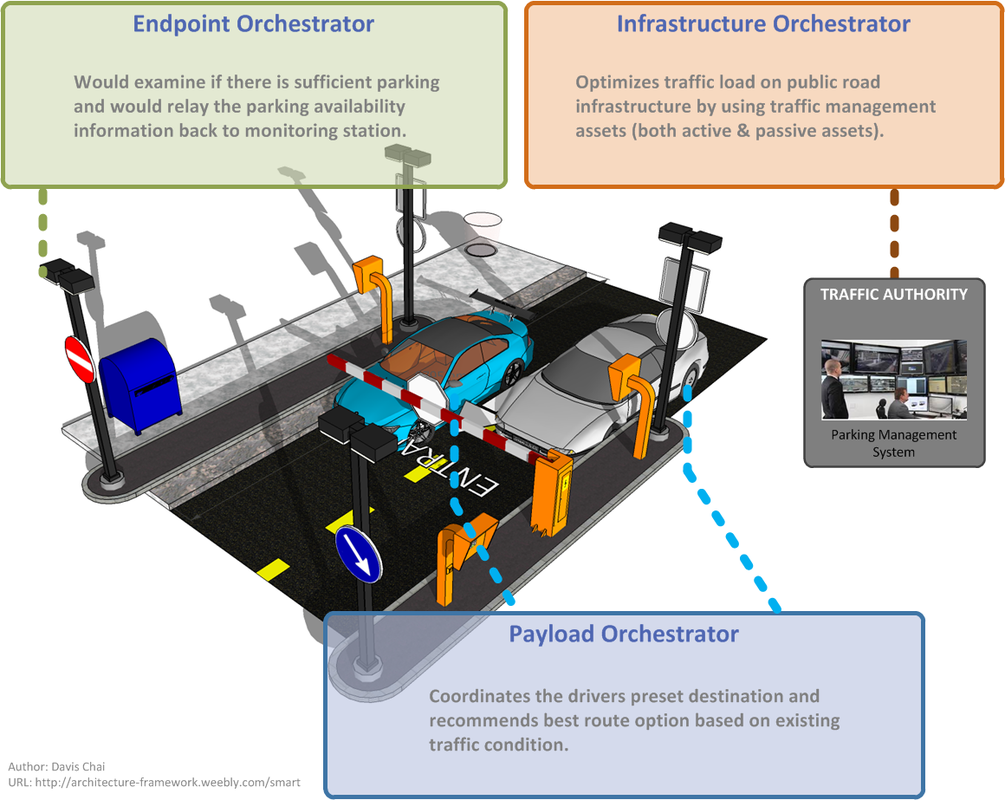
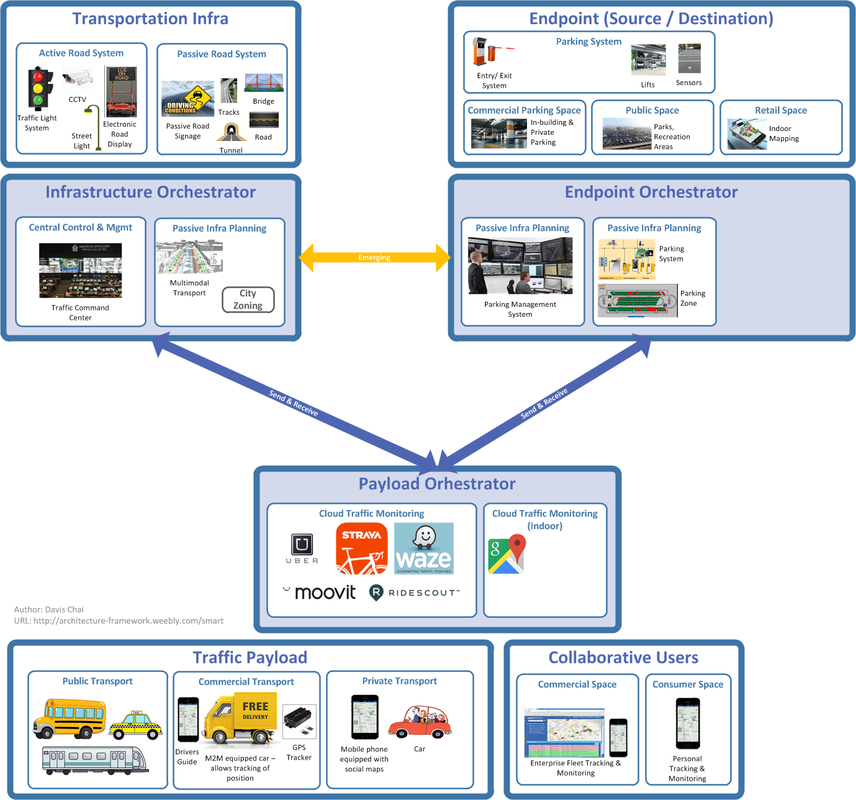
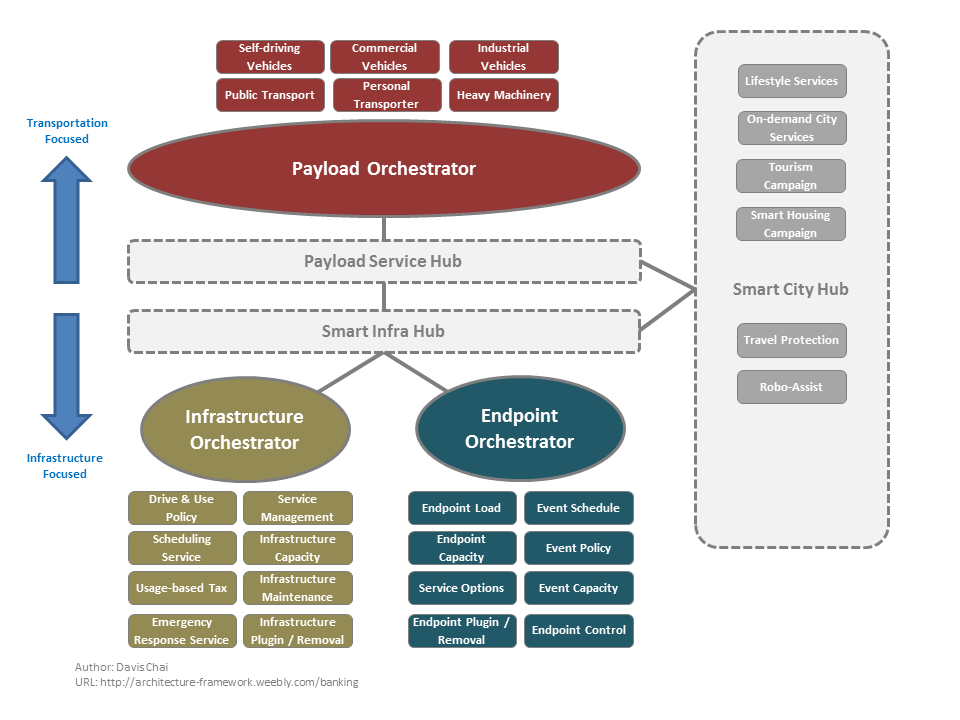
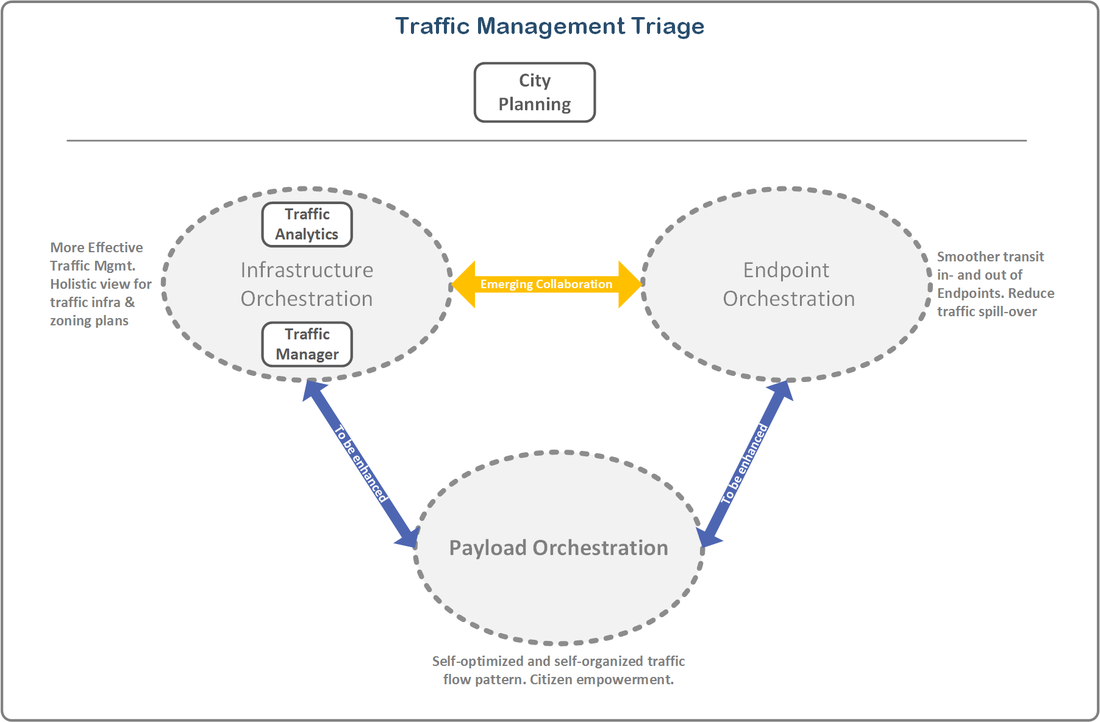
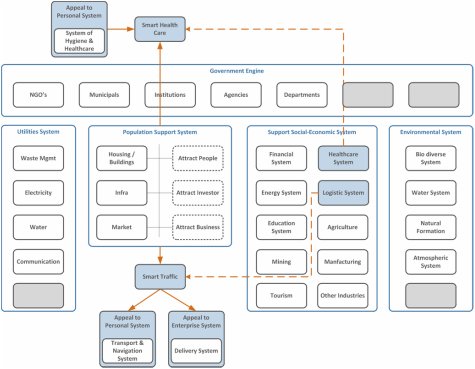
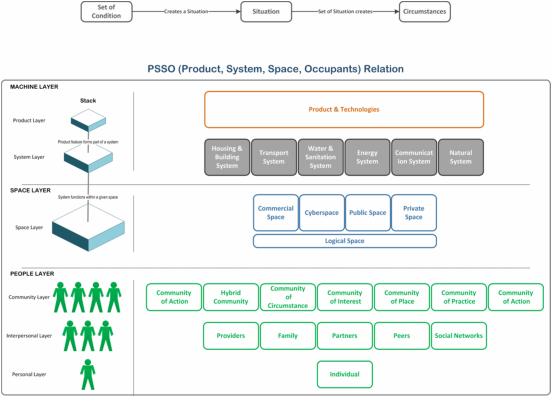
 RSS Feed
RSS Feed
